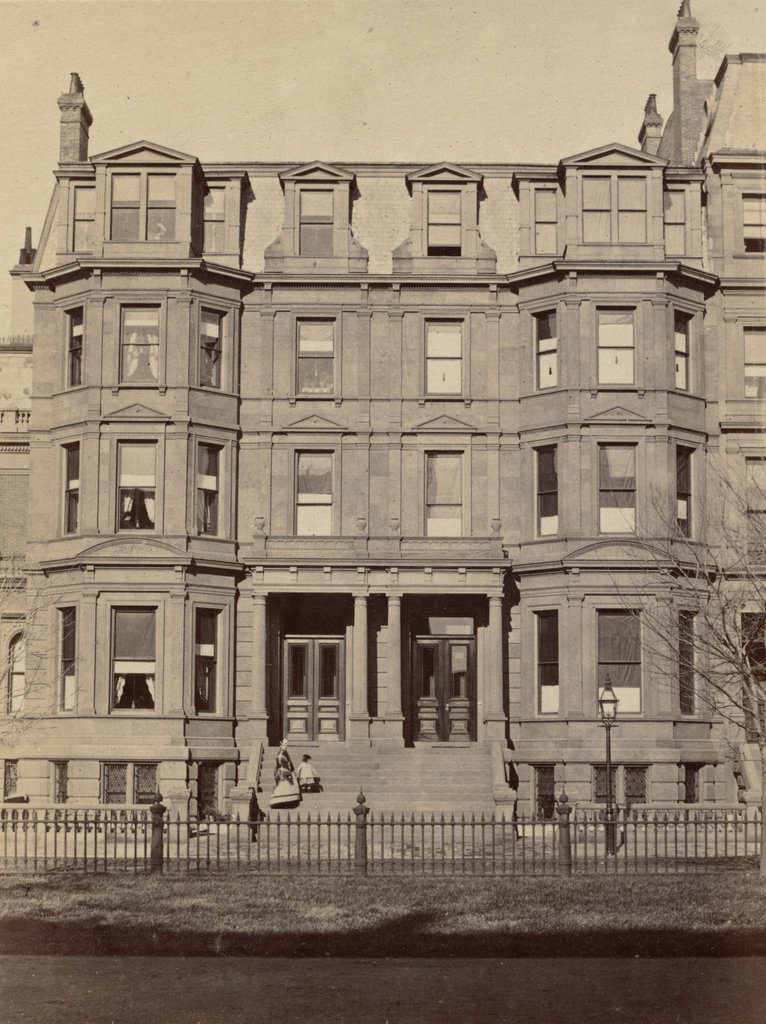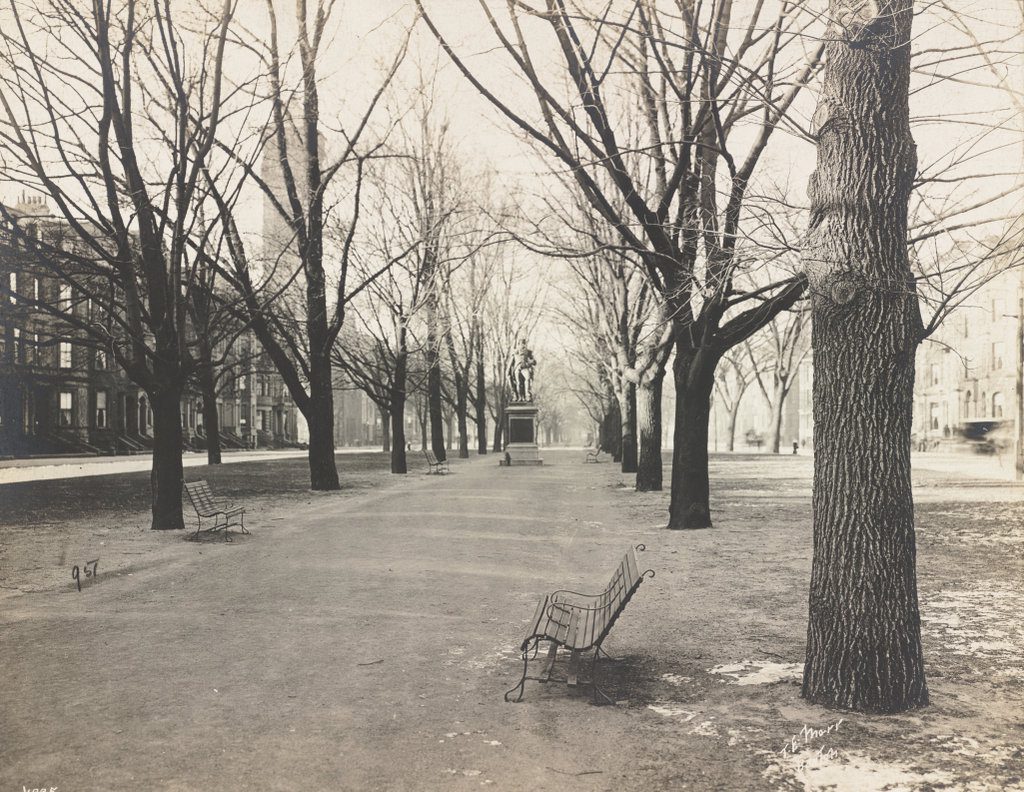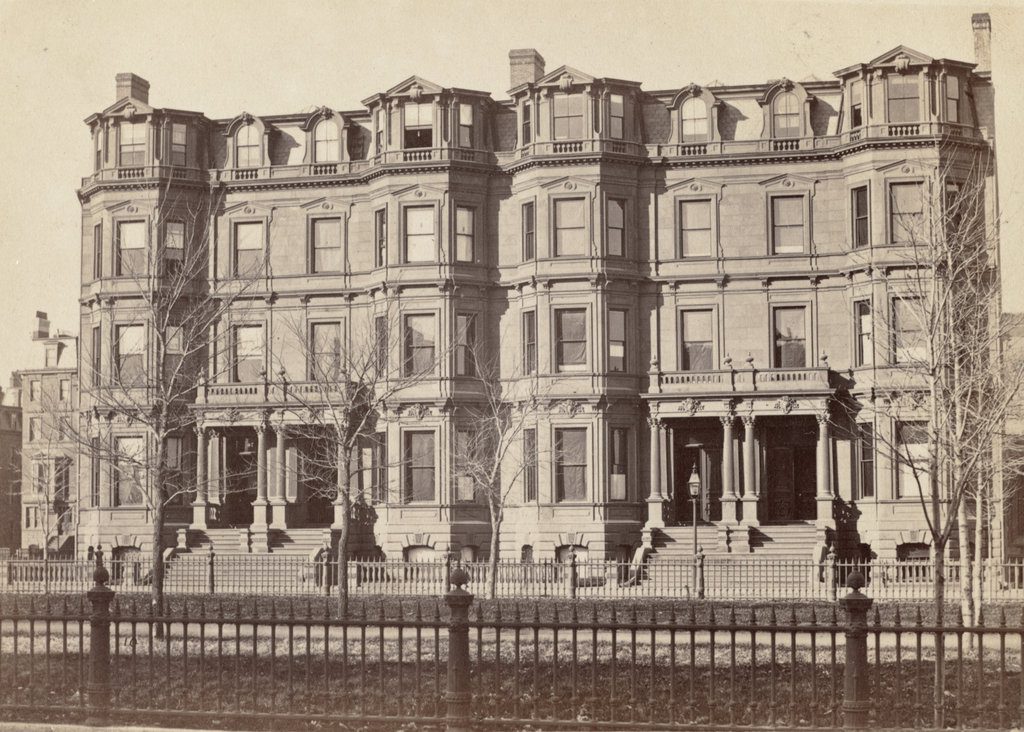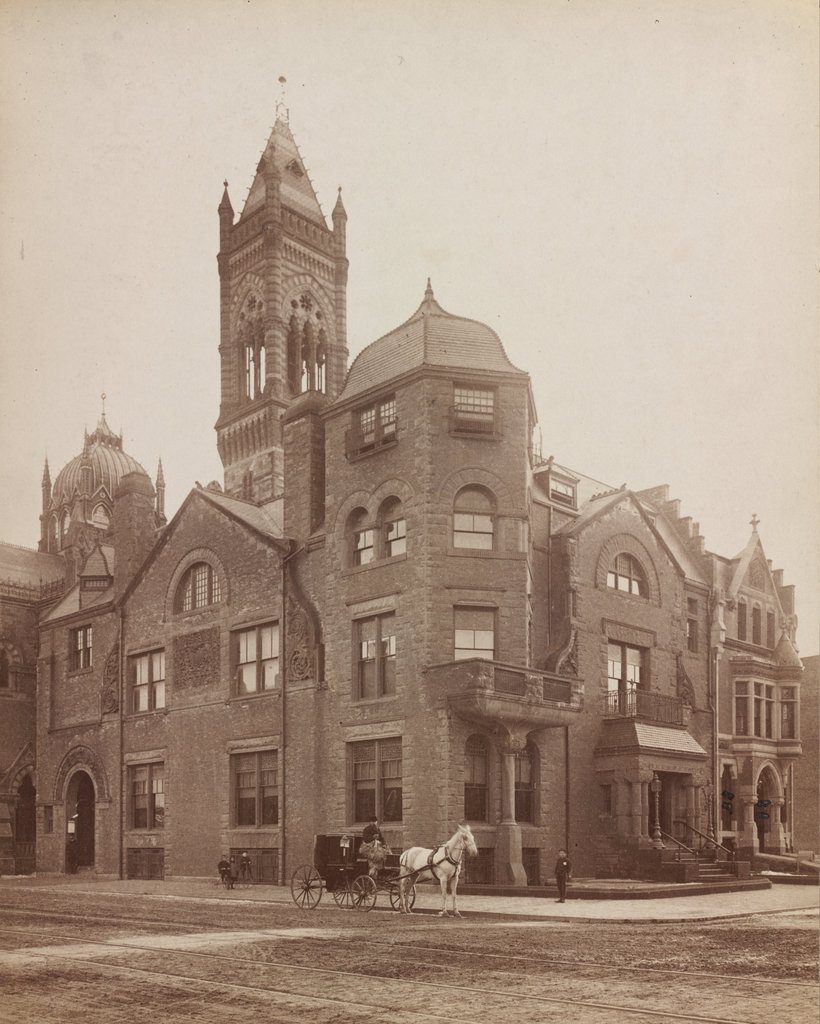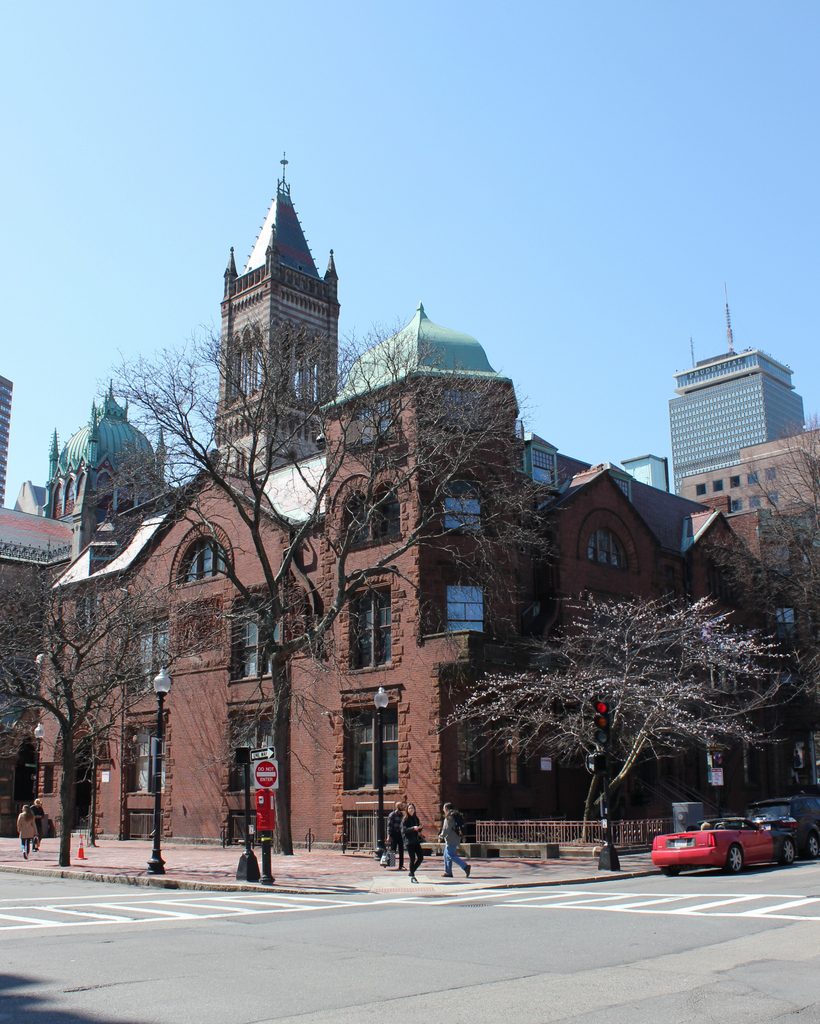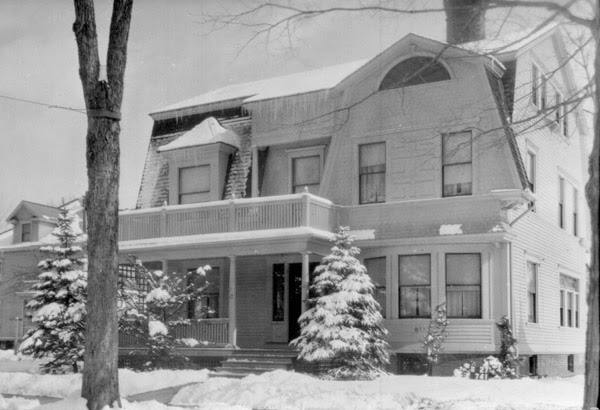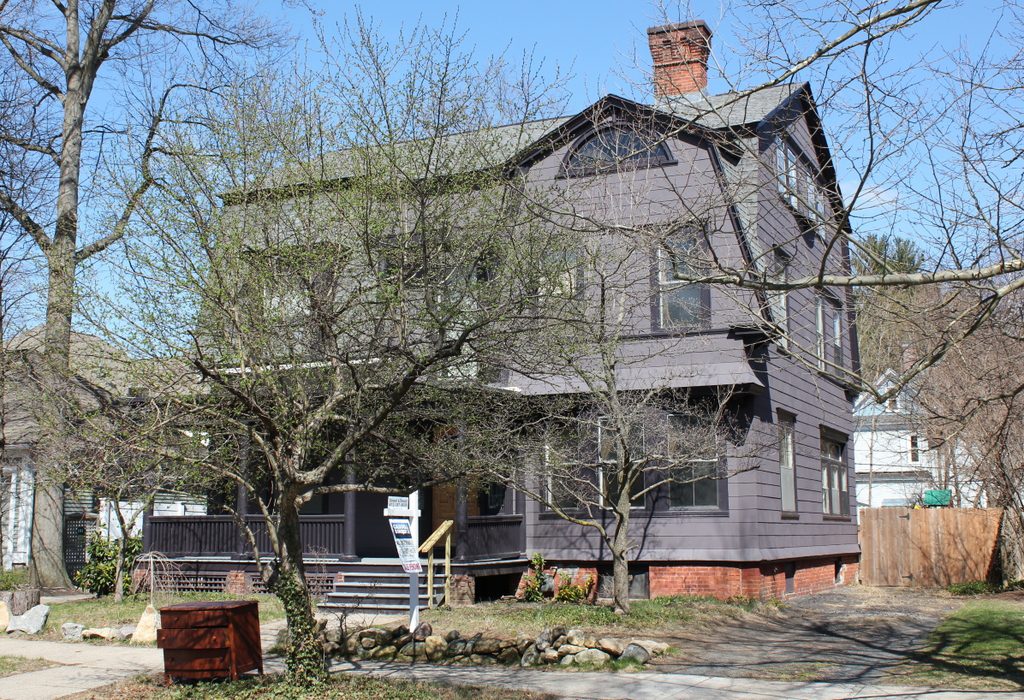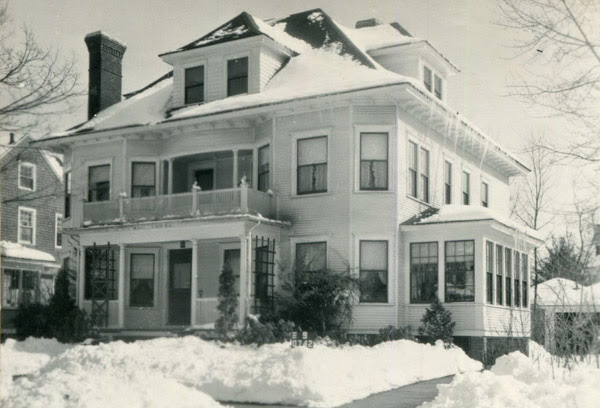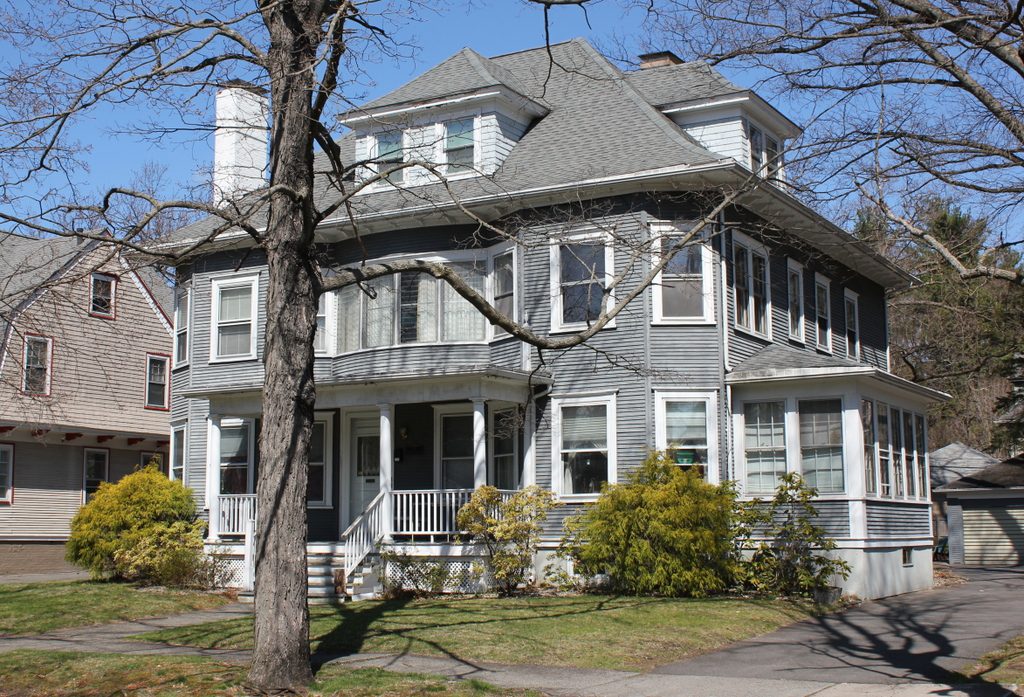The houses at 21 and 23 Commonwealth Avenue in Boston, sometime in the 1870s. Image courtesy of the Boston Public Library.
The houses in 2017:
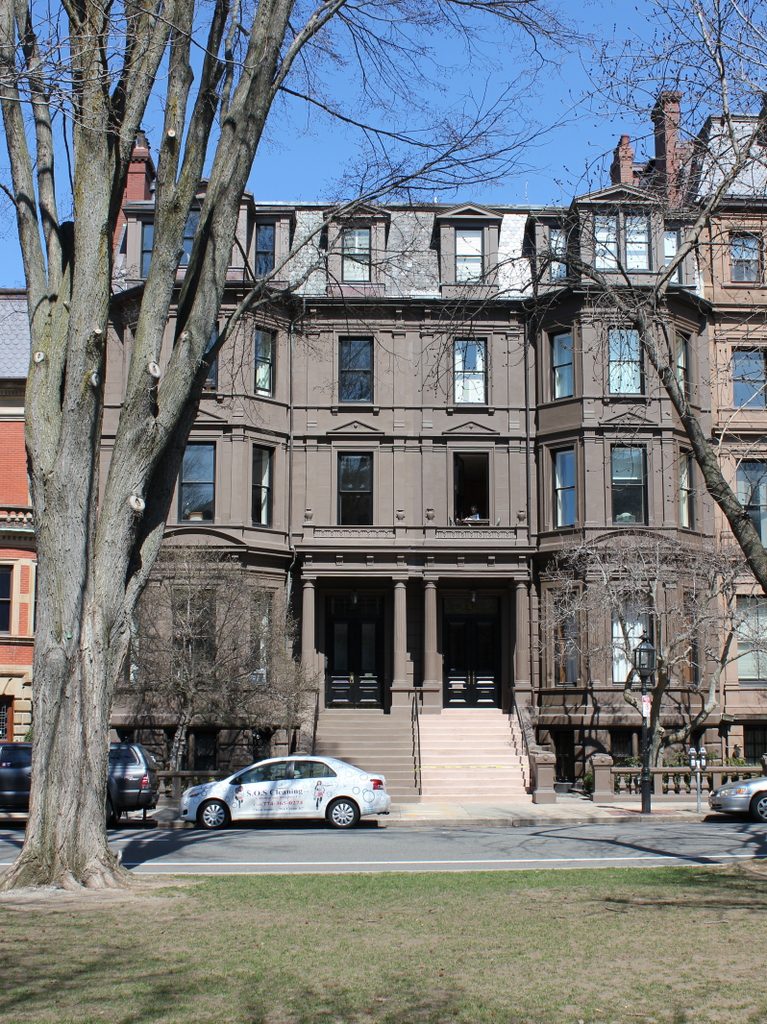
The easternmost block of Commonwealth Avenue, between Arlington and Berkeley Streets, was among the first to be developed in Boston’s Back Bay neighborhood. Shortly after the land was filled, much of the block on the north side of the street was purchased in 1860 by merchant and Congressman Samuel Hooper, who built his own house at 25-27 Commonwealth, which is partially visible on the far left. Hooper sold the rest of the lots, including these ones, and in 1868 a pair of symmetrical Second Empire-style townhouses were built here. The homes match the architectural style of the rest of the street, and they are nearly identical to two other sets of houses at 41-47 Commonwealth.
The house on the left, number 23, was owned by Daniel Spooner, a former shipping merchant who later entered the textile industry, becoming treasurer of the Great Falls Manufacturing Company in New Hampshire. He only lived in this house for about a year, until his death in 1869, but his wife Elizabeth continued to live here until later in the 1870s. The house on the right, 21 Commonwealth, was owned by John A. Burnham, a manufacturer whose positions included serving as president of the Nashua Iron and Steel Company. He lived here until his death in 1884, and the house remained in his family until 1913.
Since then, both houses have seen a number of subsequent owners, but essentially nothing has changed in this scene. Both houses are still standing, as are the houses on either side of the photos, and Commonwealth Avenue continues to be one of the most desirable streets in Boston. Today, many of the historic townhouses have been converted into apartments or condominiums, including the house on the left at 23 Commonwealth, which is now a four-unit condominium building. The building on the right was converted into classrooms in the 1940s, and was used by several different school over the years before eventually being restored to a single-family home in the early 2000s.
For more detailed historical information on these houses, see the Back Bay Houses website for 21 and 23 Commonwealth.

